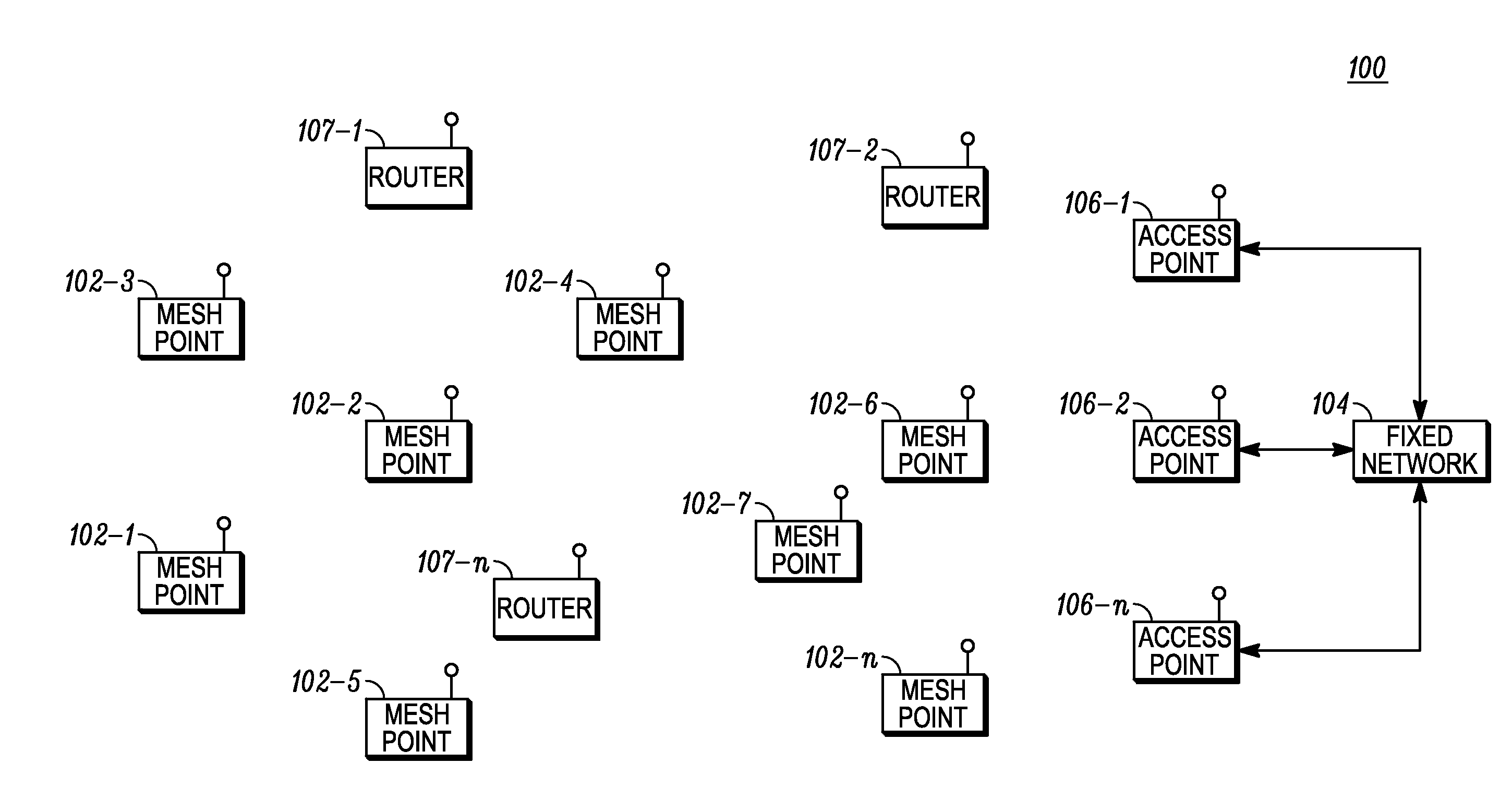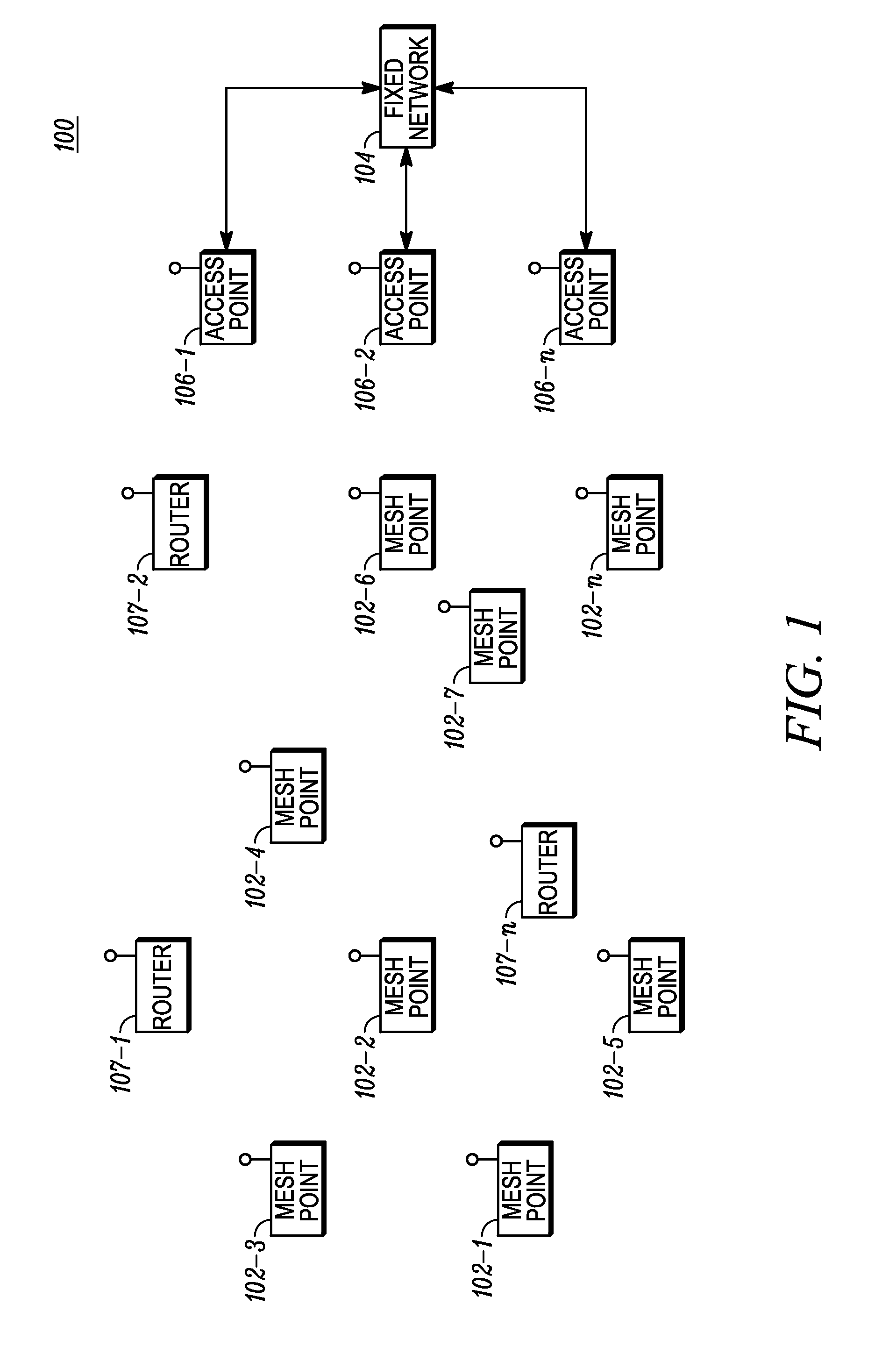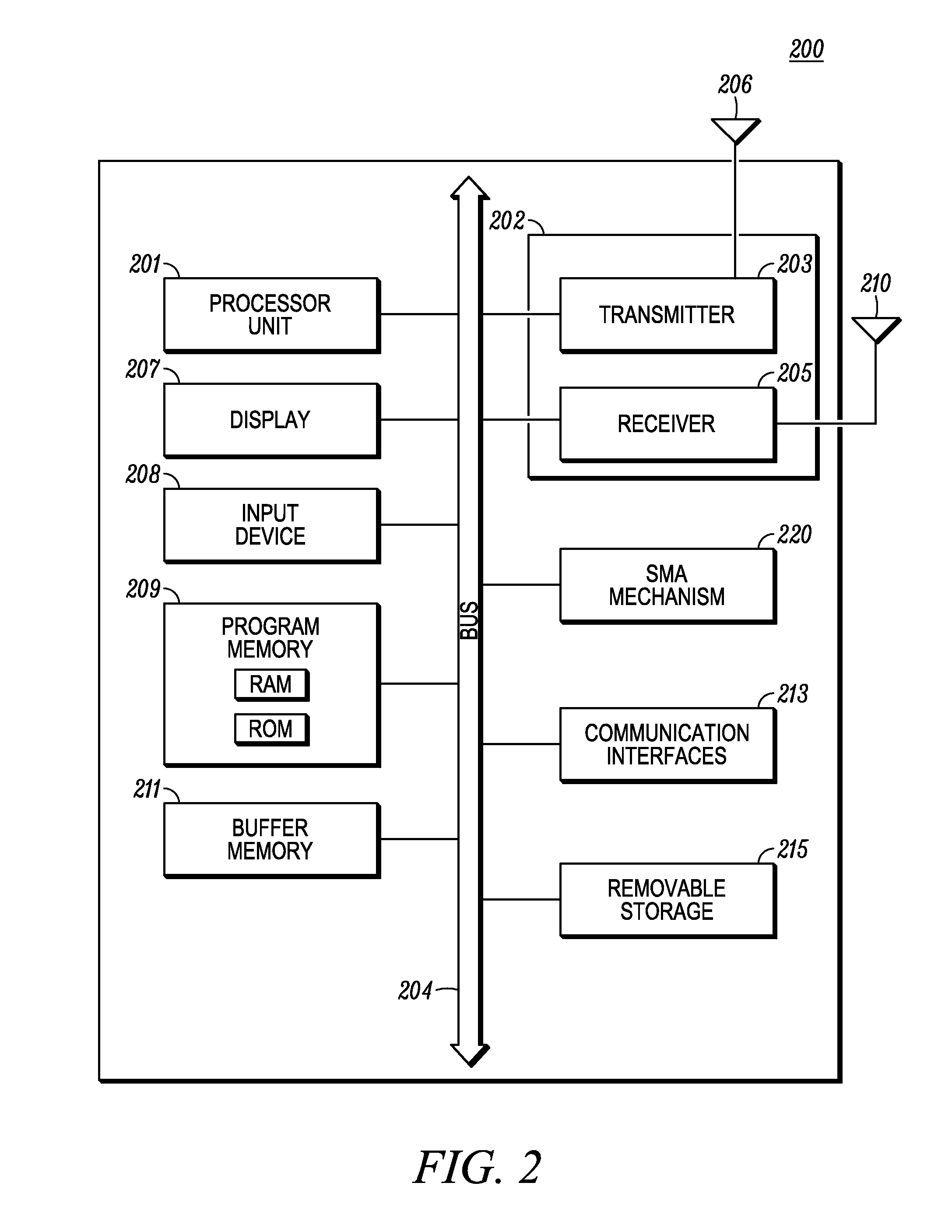Antenna-aware method for transmitting packets in a wireless communication network
a wireless communication network and antenna-aware technology, applied in the field of wireless communication networks, can solve the problems of reducing spatial reuse, affecting the ability of nodes to obtain and interpret beamforming mode and antenna pattern, and affecting the effect of broadcasting to all neighbors via omni-directional antennas
- Summary
- Abstract
- Description
- Claims
- Application Information
AI Technical Summary
Problems solved by technology
Method used
Image
Examples
first embodiment
[0043]FIG. 6 is a flowchart illustrating the operation 600 of a node within a wireless communication system for advertisement of a scheduled transmission, in accordance with a As illustrated, the operation begins with Step 605 in which an originator node of a scheduled transmission determines whether or not its transmit antenna mode is omni-directional. When its transmit antenna mode is omni-directional, the operation continues to Step 610 in which the node broadcasts its schedule omni-directionally. Next, in Step 615, the originator node determines whether or not its receive antenna mode is omni-directional. When its receive antenna mode is not omni-directional, the operation continues to Step 620 in which the originator node re-broadcasts the transmission schedule on one or more transmitter beams that are reciprocal to those that will be used for directional reception. Next, and when the receive antenna mode is omni-directional, the operation ends.
[0044]Returning to Step 605, whe...
third embodiment
[0051]FIG. 8 is a flowchart illustrating the operation 800 of a node within a wireless communication system for advertisement of a scheduled transmission, in accordance with a As illustrated, the operation begins with Step 805, in which an originator node determines whether or not its transmit antenna mode is omni-directional. When its transmit antenna mode is not omni-directional, the operation continues to Step 810 in which the originator node broadcasts its schedule directionally on all available transmit beams. The operation then ends. Alternatively, when its transmit antenna mode is omni-directional in Step 805, the operation continues to Step 815 in which the originator node broadcasts its schedule omni-directional. The operation then ends.
[0052]It will be appreciate that although only one iteration of the operation is described in FIG. 8, the operation described herein can be periodically performed within one or more nodes in a wireless communication network.
[0053]In this th...
PUM
 Login to View More
Login to View More Abstract
Description
Claims
Application Information
 Login to View More
Login to View More - R&D
- Intellectual Property
- Life Sciences
- Materials
- Tech Scout
- Unparalleled Data Quality
- Higher Quality Content
- 60% Fewer Hallucinations
Browse by: Latest US Patents, China's latest patents, Technical Efficacy Thesaurus, Application Domain, Technology Topic, Popular Technical Reports.
© 2025 PatSnap. All rights reserved.Legal|Privacy policy|Modern Slavery Act Transparency Statement|Sitemap|About US| Contact US: help@patsnap.com



